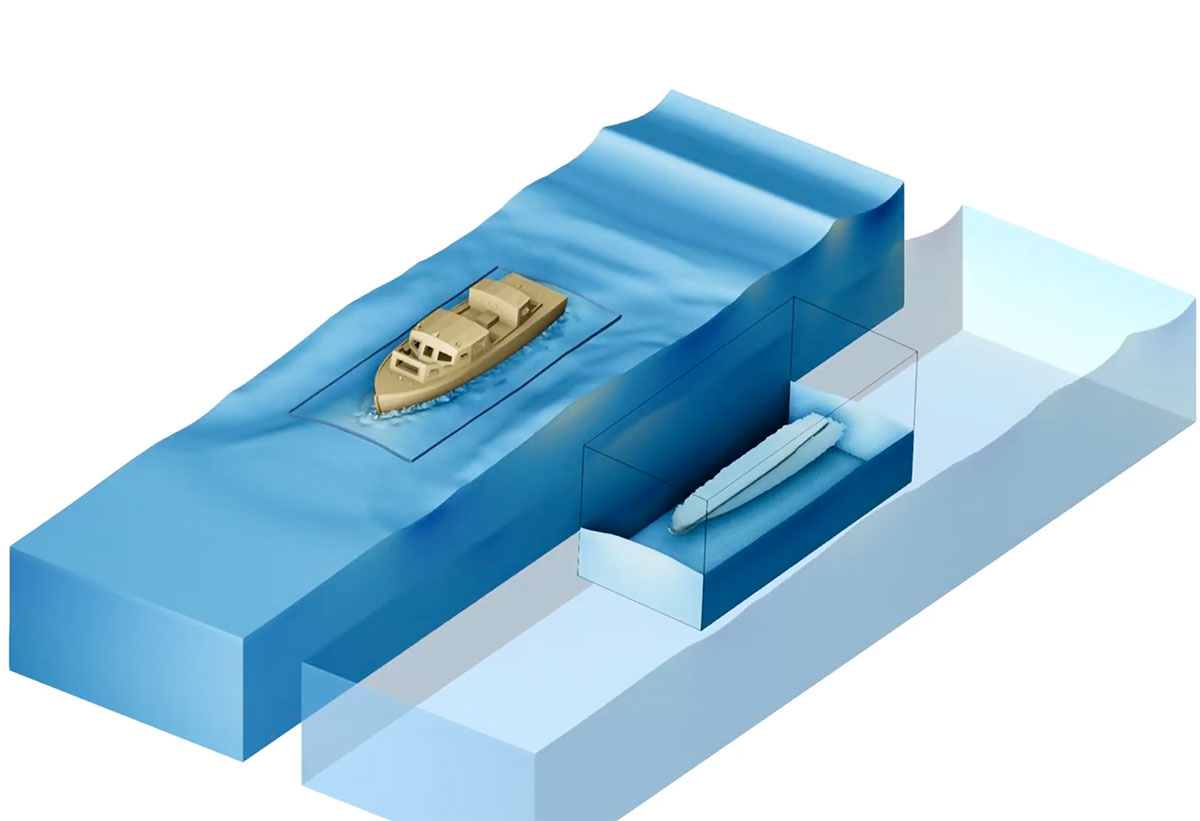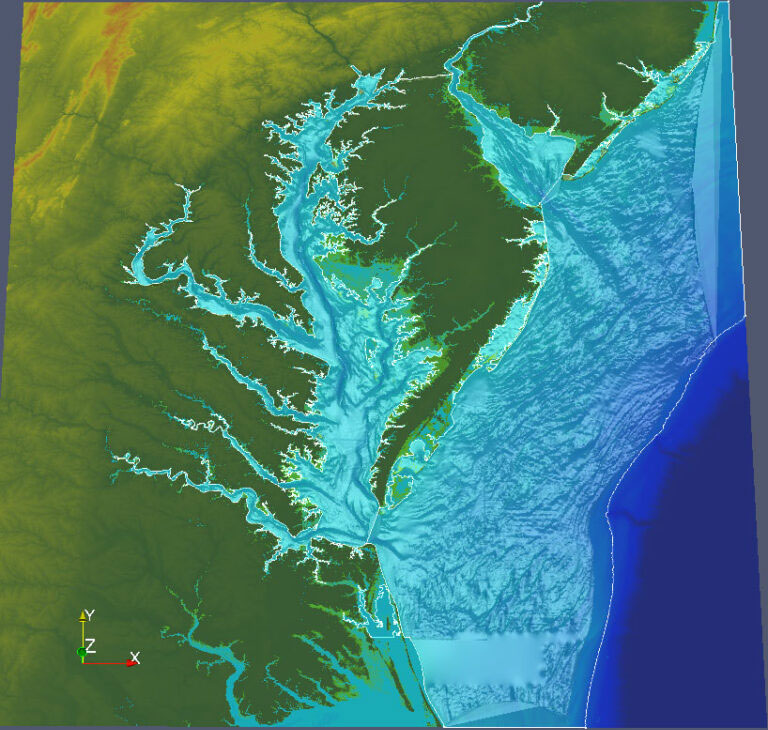Making Waves with Computational Model Builder

Addressing the Complexities of Physical Wave Tank Experiments
Traditional wave tank experiments are essential for understanding hydrodynamics, but come with significant challenges. They require substantial investments in physical models, actuators, and instrumentation. Moreover, scaling effects introduce complexities, such as the dominance of viscous forces at smaller scales and the variability of material properties. Reproducing interactions between wind and waves accurately remains a persistent issue.
Computational simulations offer a promising alternative. However, setting up and managing these simulations can also be intricate and error-prone. Misconfigured geometries, improperly sized meshes, and tracking numerous simulation parameters often lead to inefficiencies and potential inaccuracies.
Introducing Computational Model Builder: A Structured Approach to Simulation Workflows
Kitware’s Computational Model Builder (CMB) addresses these challenges by providing a task-based workflow system tailored for OpenFOAM simulations. Built upon ParaView, CMB integrates various open source tools into a cohesive framework, streamlining the simulation process from model setup to result analysis.
CMB’s foundation is the Simulation Modeling Toolkit (SMTK), which offers essential features for interactive visual workflows. For example, the Wave Tank workflow leverages SMTK’s Task functionality, allowing users to efficiently break down and structure their workflows. Each task can focus on specific operations, such as defining boundary conditions or running mesh generators. Tasks are interconnected through input/output ports, ensuring seamless data transfer and dependency management.
Enhancing Workflow Efficiency with Reusable Components
CMB supports the creation of worklets, which are reusable collections of connected tasks. These worklets can be instantiated across projects, promoting efficiency and standardization. Task authoring is facilitated through JSON, allowing for straightforward validation of operation completion and user-provided inputs. This approach reduces errors and eliminates the need for ad-hoc integration code.
See CMB in Action
To get a firsthand look at how these task-based workflows operate, watch our on-demand webinar, where we demonstrate CMB applied to wave tank simulations and highlight its flexibility, reusability, and project management capabilities.
Comprehensive Information Modeling and Project Management
Beyond workflow execution, CMB offers robust information modeling capabilities. Users benefit from extensible constraints, unit support, and value-driven structures. The platform also provides expression support, 3D visualization, and object-oriented conceptualization, enhancing the clarity and accessibility of workflows.
Project management features allow designers to control file layouts, hide procedurally generated assets, and manage multiple studies within a single project, ensuring repeatability and consistency across experiments.

Key Advantages of Adopting CMB
- Facilitates knowledge transfer from simulation designers to end users.
- Focuses on user experience rather than solver intricacies.
- Tracks all workflow-related assets, reducing wasted HPC cycles.
- Offers a single, customizable application framework with minimal compilation.
- Provides a permissive open source license for flexible deployment.
- Includes syntax and semantic checking to prevent errors before computationally intensive runs.
Partnering with Kitware for Advanced Simulation Solutions
At Kitware, we don’t just adapt to evolving simulation workflows; we help define them. As the creators of platforms such as ParaView, VTK, Catalyst, and CMB, we bring decades of expertise in high-performance computing, large-scale visualization, and open science. This foundation empowers research and engineering teams to accelerate the path from simulation to insight with tools that are efficient, scalable, and designed for demanding real-world applications.
If you’d like to learn more about Computational Model Builder or explore how it can support your wave tank and workflows, contact our team.
Acknowledgement:
This work was done in collaboration with Sandia National Laboratories with support from the U.S. Department of Energy’s Water Power Technologies Office.